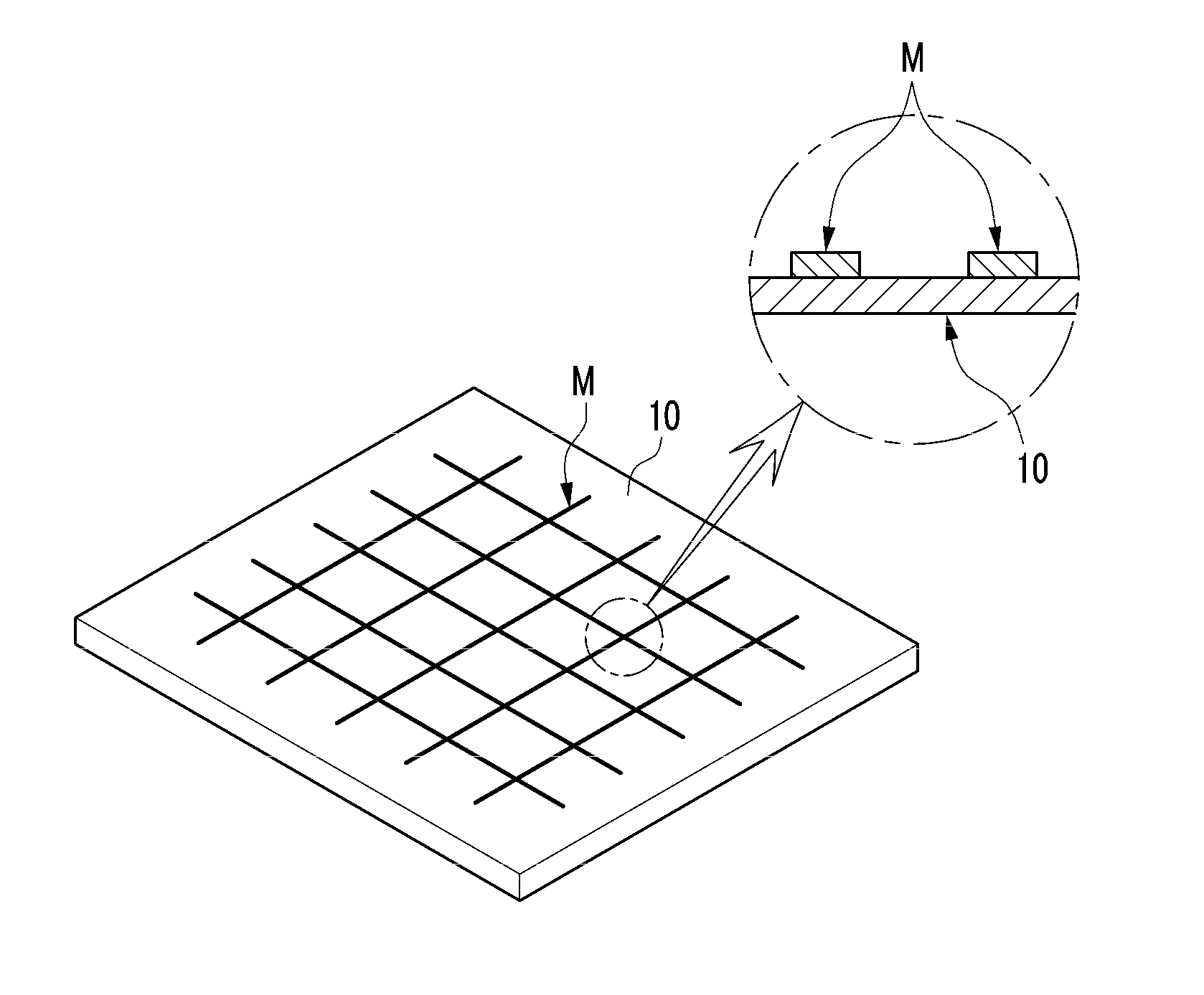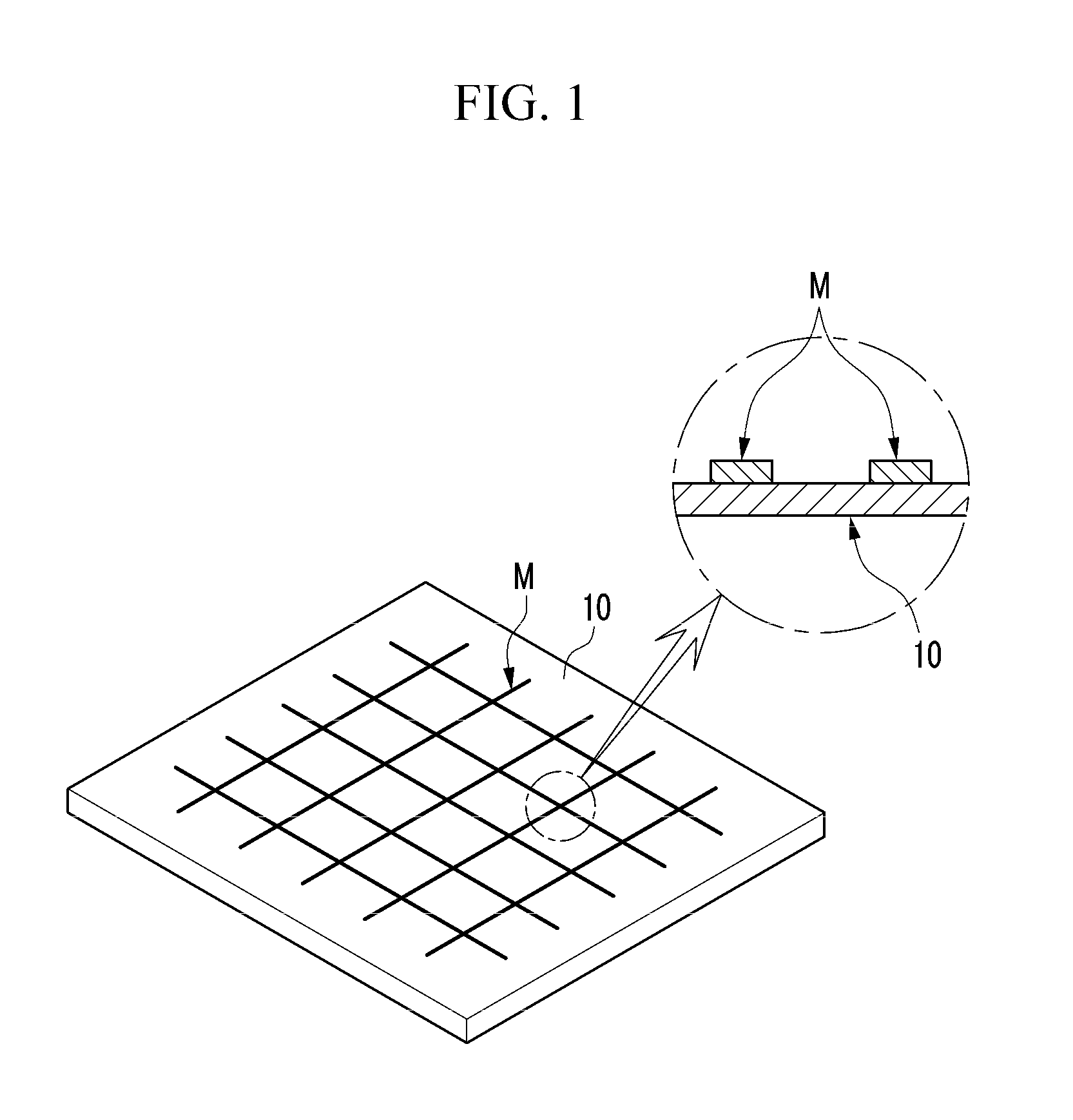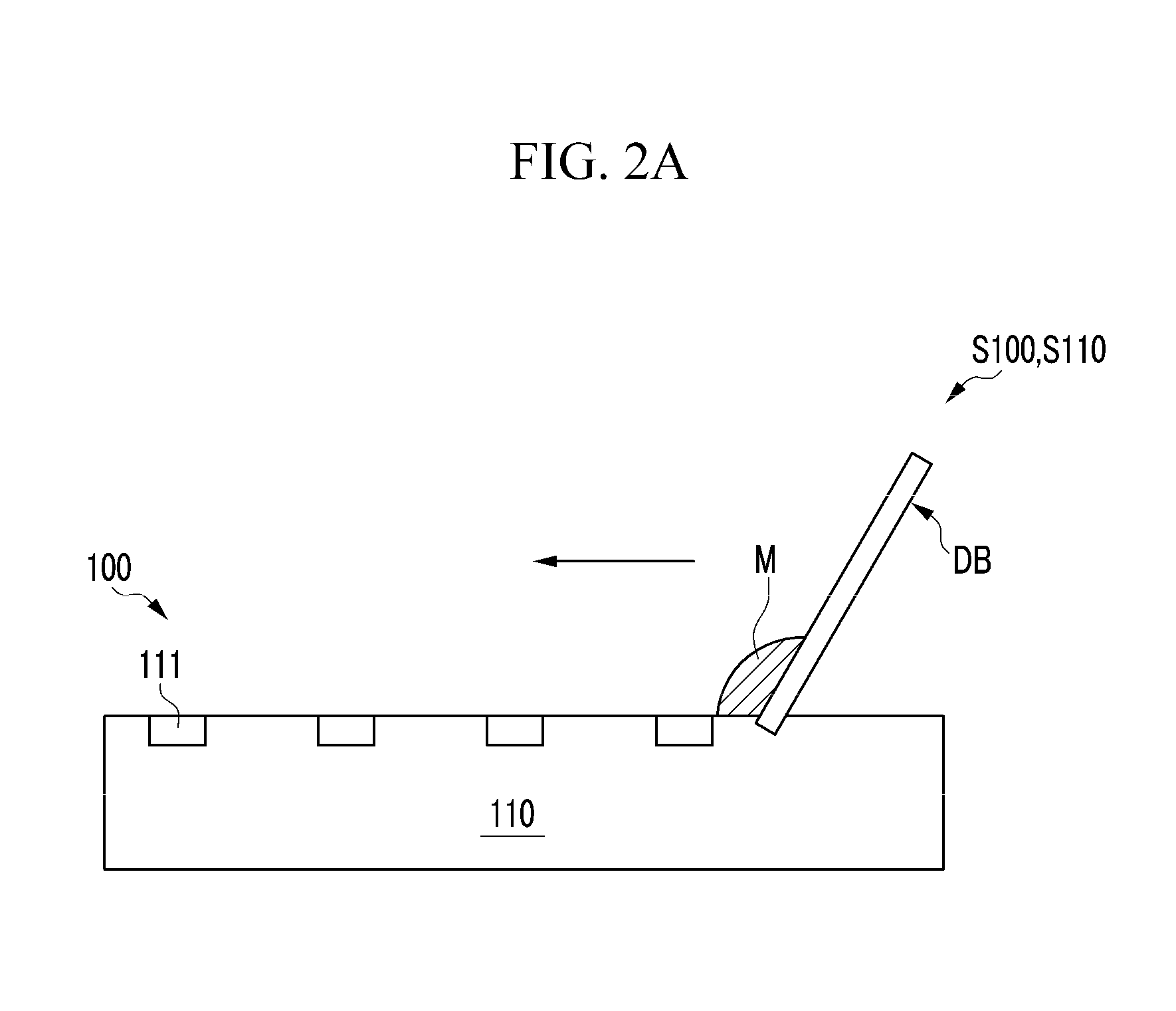Method for burying conductive mesh in transparent electrode
- Summary
- Abstract
- Description
- Claims
- Application Information
AI Technical Summary
Benefits of technology
Problems solved by technology
Method used
Image
Examples
exemplary embodiment 1
[0039]As shown in FIGS. 2A to 2E, the embodiment of the present invention involves a method S100 for burying a conductive mesh M in a transparent electrode E by using a mesh burying device 100 including a bed 110 with a plurality of recesses 111, serving as molds of the conductive mesh M buried in the transparent electrode E and forming a mesh form by crossing each other, and a first transfer unit 120 made of PDMS adapted to be in contact with the bed 110.
[0040]To this end, first of all, the step S110 (hereinafter, referred to as the eleventh step) of filling a liquid conductive mesh M in the recesses 111 of the bed 110 is carried out. (see FIG. 2A)
[0041]In the eleventh step S110, a liquid conductive mesh may be poured onto the bed 110 by a dispenser (not shown), and then the liquid conductive mesh M may be filled in the recesses 111 of the bed 110 by using a doctor blade DB.
[0042]Afterwards, the step S120 (hereinafter, referred to as the twelfth step) of bringing the first transfer...
exemplary embodiment 2
[0056]As shown in FIGS. 3A to 3I, the embodiment of the present invention involves a method S200 for burying a conductive mesh M in a transparent electrode E by using a mesh burying device 200 including a bed 210 with a plurality of recesses 211, serving as molds of the conductive mesh M buried in the transparent electrode E and forming a mesh form by crossing each other, a first transfer unit 220 made of PDMS adapted to be in contact with the bed 210, and a second transfer unit 230 made of PDMS adapted to be in contact with the first transfer unit 220, and having a lower contact force than the first transfer unit 220.
[0057]To this end, first of all, the step S210 (hereinafter, referred to as the twenty-first step) of filling a liquid conductive mesh M in the recesses 211 of the bed 210 is carried out. (see FIG. 3A)
[0058]The twenty-first step S210 is identical to the eleventh step S110 of Exemplary Embodiment 1, so redundant description will be omitted.
[0059]After carrying out the t...
exemplary embodiment 3
[0070]As shown in FIG. 4, the embodiment of the present invention provides a method S300 of burying a conductive mesh M in a transparent electrode E by a gravure offset printing machine 300.
[0071]That is, the embodiment of the present invention provides a method S300 of burying a conductive mesh M in a transparent electrode E by a gravure offset printing machine 300, the gravure offset printing machine 300 including a pattern roller 310 with a plurality of recesses 311, serving as molds of the conductive mesh M buried in the transparent electrode E and forming a mesh form by crossing each other, a blanket roller 320 having a blanket 321 made of PDMS adapted to be in contact with the pattern roller 310, and an impression roller 330 to be brought into contact with the blanket roller 320, with a substrate S interposed therebetween.
[0072]To this end, first of all, the step S310 (hereinafter, referred to as the thirty-first step) of filling a liquid conductive mesh M in the recesses 311 ...
PUM
| Property | Measurement | Unit |
|---|---|---|
| Electrical conductor | aaaaa | aaaaa |
| Transparency | aaaaa | aaaaa |
Abstract
Description
Claims
Application Information
 Login to View More
Login to View More - R&D
- Intellectual Property
- Life Sciences
- Materials
- Tech Scout
- Unparalleled Data Quality
- Higher Quality Content
- 60% Fewer Hallucinations
Browse by: Latest US Patents, China's latest patents, Technical Efficacy Thesaurus, Application Domain, Technology Topic, Popular Technical Reports.
© 2025 PatSnap. All rights reserved.Legal|Privacy policy|Modern Slavery Act Transparency Statement|Sitemap|About US| Contact US: help@patsnap.com



